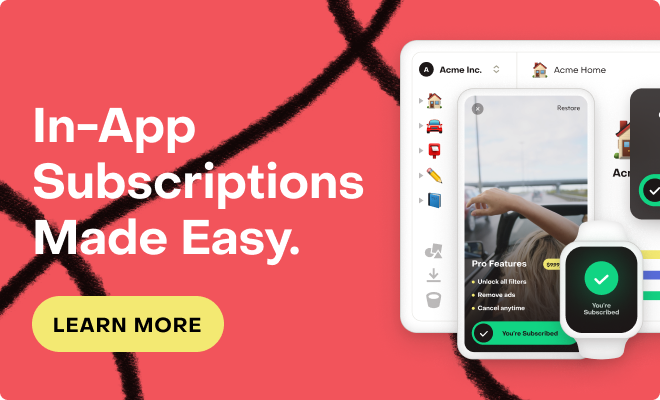Dear RevenueCat team and community,
I’m currently exploring the most robust and scalable approach to integrate RevenueCat into my app’s architecture, and I would greatly appreciate your insight.
Specifically, I’m looking for a way to use RevenueCat as the payment processor, while managing subscription logic and access control entirely within my own backend.
I’ve reviewed the documentation and several community examples, but I haven’t come across a setup that fully aligns with this approach. Below, I’ve outlined the different options I’ve considered — along with the challenges and trade-offs associated with each — in the hopes of receiving your feedback on what might be the most appropriate and future-proof solution.
Objective
Manage all access control and feature restrictions (e.g., premium functionality, group boosts) internally, while using RevenueCat for purchase handling and subscription lifecycle management.
Option 1: RevenueCat as the Source of Truth (via API)
This follows the conventional setup — using the RevenueCat REST API to validate subscription status on demand.
Concerns:
-
For each premium-restricted endpoint, my backend would need to make an external API call to RevenueCat to validate entitlement.
-
This introduces additional latency and potential performance bottlenecks.
-
It also adds complexity when scaling, especially for endpoints that are frequently used (e.g., creating new objects like categories).
Option 2: Passing Subscription Data via Client Requests
Here, I’d include the user's subscription status (as retrieved from RevenueCat) in API requests — for example, passing a hasPremium: true flag from the client.
Concerns:
-
This requires significant adjustments across many endpoints to accommodate and validate additional metadata.
-
Trusting client-side state, even with validation, introduces risk and fragility.
-
It adds implementation overhead and increases the likelihood of inconsistencies.
Option 3: Syncing Subscription Status to Backend at Key Moments
This approach involves:
-
Updating the user record in my backend when a purchase is completed (client triggers a sync).
-
Performing a fresh check at app launch or significant lifecycle events, updating the backend again if the subscription status has changed.
Concerns:
-
This approach is relatively simple and keeps backend logic clean.
-
However, it’s not reliable for time-sensitive actions like group-based subscriptions (e.g., “boosts”), where precise knowledge of expiration or renewal dates is required.
-
There’s a risk of stale data if the app isn’t launched frequently or misses important subscription changes.
-
Trusting client-side state, even with validation, introduces risk and fragility.
Option 4: Webhook-Driven Sync to Backend (Event-Based)
This is the most promising model I've considered.
-
RevenueCat webhooks notify my backend of relevant subscription events (e.g., renewals, cancellations, expirations).
-
My backend updates user and group records accordingly.
-
All access control is then based on local data, which remains consistent thanks to RevenueCat’s event stream.
Advantages:
-
Enables real-time updates without polling.
-
Keeps subscription data under local control, ensuring fast and scalable access control.
-
Supports more advanced features like group-level upgrades (“boosts”), by tracking subscription expirations internally.
Key Questions
-
Is it advisable to rely on RevenueCat primarily as an event emitter (via webhooks), while maintaining subscription state in my own database as the primary source of truth for access control?
-
Are there best practices for managing hybrid setups like this, where RevenueCat handles transactions, but business logic is managed internally?
-
In which scenarios would the RevenueCat API still be the preferred method over webhooks — for example, for verification, reconciliation, or on-demand checks?
-
Is there anything structurally flawed or risky about this webhook-centric approach in terms of long-term maintainability or alignment with RevenueCat’s intended use?
I appreciate any input the team or community can provide on this. My goal is to build a system that is both technically solid and operationally sustainable.
Thank you in advance for your time and expertise.
Best regards,




